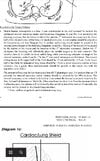- Joined
- Oct 4, 2017
- Messages
- 5,017
- Reaction score
- 9,784
If I am treating the imn (pt w really bad disease)contralateral breast is my lowest concern.I think I'm like many folks who will open tangents superiorly to cover first 3 intercostal interspaces for IM nodes with trimming inferiorly. Will also sim flat and push ISO as superiorly as reasonable to reduce lung dose from Sclav. Coverage to 45 or even 40 Gy often accepted.
Matched electron was one of those things that I learned in residency and then I had some real skin toxicity in the real world that I never wanted to cause again. Matched photon will blow up heart dose, which we emphasize more now than 15 years ago.
I have used IMRT for left sided breast/CW with RNI. The coverage recs per these protocols aren't much more than what I described above. A lot of allowing 90% of volume to get prescription dose. Sometimes necessary for heart/lung dose but rarely and always a compromise IMO regarding contralateral breast dose and integrated dose.

